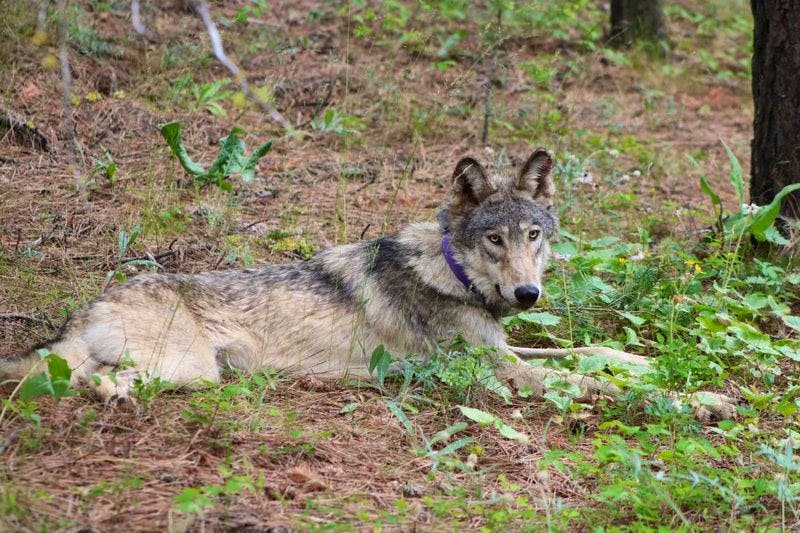Tweet“OR-93 made history with his incredible journey from near Oregon’s Mt. Hood all the way south to Ventura County, crossing numerous major highways along the way. His unfortunate demise along Interstate 5 underscores the need for more wildlife crossing structures throughout the state to facilitate safe passage for animals and increase safety for human travelers.”
The hopeful long-distance journey of a gray wolf from western Oregon dubbed OR-93 has come to a tragic end. The California Department of Fish and Wildlife confirmed today that the male wolf was killed on California Interstate 5 near the town of Lebec earlier this month. OR-93 had traveled farther south into the state than any known wild wolf in a century, a historic journey that highlights the importance of habitat connectivity and the dispersal ability of this iconic species.
“This is an extremely sad ending to such a hopeful story,” said Pamela Flick, California program director with Defenders of Wildlife. “OR-93 made history with his incredible journey from near Oregon’s Mt. Hood all the way south to Ventura County, crossing numerous major highways along the way. His unfortunate demise along Interstate 5 underscores the need for more wildlife crossing structures throughout the state to facilitate safe passage for animals and increase safety for human travelers.”
On the afternoon of Nov. 10, the Oregon Department of Fish and Wildlife (CDFW) received a phone call from a truck driver who witnessed the deceased wolf along a dirt trail near a frontage road running parallel to I-5. A CDFW warden responded to the scene to collect the carcass which was quickly identified as OR93 because of its collar.
The carcass was transported to the Wildlife Health Laboratory in Rancho Cordova, Calif. where a complete necropsy was performed. The wolf had significant tissue trauma to the left rear leg and a dislocated knee as well as soft tissue trauma to the abdomen. The injuries were deemed to be caused by a vehicle strike.
Young gray wolves can disperse very long distances from their natal area and OR-93 is no exception. Before his demise, he was documented traveling the farthest south in California since wolves returned to the state, which is historically wolf habitat. The last documented wolf that far south was captured in San Bernardino County in 1922.
According to CDFW, OR-93 was a male wolf born in 2019. He dispersed from the White River pack in northern Oregon. When his collar was providing information, he was tracked entering Modoc County on January 30, 2021. After briefly returning to Oregon, he reentered Modoc County on February 4. On February 24, he entered Alpine County after passing through portions of Lassen, Plumas, Sierra, Nevada, Placer, El Dorado, Amador and Calaveras counties. On February 25, he entered Mono County. In mid-March, he was in western Tuolumne County. By late March he was in Fresno County, and then entered San Benito County after crossing Highway 99 and Interstate 5. He was in Monterey County on April 1 and his last collar transmission was from San Luis Obispo County on April 5.
Between January 2021 and April 5, 2021, OR-93 had traveled at least 935 air miles in California, a minimum average of 16 air miles per day.
Gray wolves are listed as endangered pursuant to California’s Endangered Species Act (CESA). Anyone who believes they have seen a wolf in California can report it to CDFW.
For over 75 years, Defenders of Wildlife has remained dedicated to protecting all native animals and plants in their natural communities. With a nationwide network of nearly 2.1 million members and supporters, Defenders of Wildlife is a leading advocate for innovative solutions to safeguard our wildlife for generations to come. To learn more, please visit https://defenders.org/newsroom or follow us on X @Defenders.
Media Contact
News

Hundreds of Thousands of Americans Oppose Trump Administration Effort to Roll Back Protections for Imperiled Animals and Plant Species



